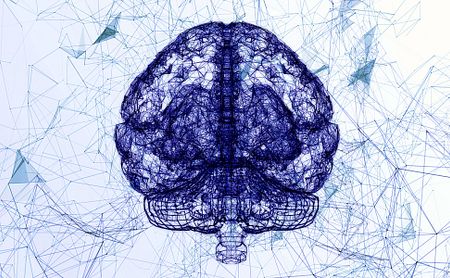Asymmetric Loss of Brain Neurons Tied to Different Symptom Severity

The asymmetric loss of dopamine-producing, or dopaminergic, neurons in the brains of people with Parkinson’s disease may determine the severity of patients’ motor and cognitive symptoms, a study suggests.
Such differences in the loss of these dopaminergic neurons — a characteristic feature of Parkinson’s — may explain the contrast in symptoms experienced by patients, the researchers said.
Particularly, a more pronounced dopaminergic neuron loss on the right side, or hemisphere, of the brain was associated with greater motor impairment, the researchers found. Meanwhile, more predominant damage on the brain’s left hemisphere was linked to worse attention and cognitive processing speed, though these were still within the normal range.
These findings highlight the influence of brain hemispheric asymmetry in dopaminergic neuron loss in Parkinson’s motor and cognitive manifestations.
Further studies are needed to better understand these associations and whether asymmetric dopaminergic neuron loss in the brain — as assessed with non-invasive dopamine transporter imaging — can be used as a biomarker of distinct sub-clinical and clinical disease symptoms, the researchers noted.
“We believe our results can expand the current knowledge about the role of hemispheric asymmetry of … degeneration on disease course and possibly provide important clinical implications for treatment plans and intervention strategies,” the team wrote.
The study, “Asymmetric Dopamine Transporter Loss Affects Cognitive and Motor Progression in Parkinson’s Disease,” was published in the journal Movement Disorders.
Parkinson’s disease is characterized by a progressive loss of dopaminergic neurons in the substantia nigra, a bilateral brain region involved in voluntary movement control. This leads to a deficiency in dopamine — a chemical messenger that allows nerve cells to communicate — and subsequently the development of characteristic Parkinson’s motor impairments.
Notably, this dopaminergic neuron loss is asymmetric, predominantly affecting the substantia nigra of only one side of the brain, which results in the development of motor symptoms on the opposite side of the body. (The left hemisphere controls the right side of the body and vice versa).
Previous studies have suggested that this hemispheric asymmetry affects not only motor symptoms of Parkinson’s, but also the disease’s non-motor manifestations, such as cognitive impairment. However, “it is still debated if right or left asymmetry differently affects cognitive and motor progression,” the researchers wrote.
To clarify this, researchers in Italy evaluated the cognitive and motor functions of 249 right-handed Parkinson’s patients with pronounced dopaminergic neuron loss asymmetry. Among the patients, 143 had predominant loss on the left hemisphere (PD-left) and 106 on the right hemisphere (PD-right).
Dopaminergic loss was measured using DaTscan, a type of non-invasive single-photon emission computed tomography imaging technique that helps visualize dopamine transporter levels in the brain, which also are progressively lost in Parkinson’s.
DaTscan is an objective measure of the severity of motor symptom asymmetry.
The included patients were participating in the observational, international Parkinson’s Progression Markers Initiative (PPMI) study (NCT01141023), which is slated to run through this December.
The researchers evaluated patients’ DaTscan, cognitive, and motor data at disease onset (without prior treatment) and after two and four years. Their data also were compared with those of 196 right-handed healthy individuals, also involved in PPMI.
There were no differences between the PD-left and PD-right groups in terms of demographic information or in the severity of dopamine transporter loss in the brain. In addition, DaTscan-detected hemispheric asymmetry was maintained during follow-up.
The significantly greater proportion of patients with predominant left-brain damage (57% vs. 43%) was consistent with previously reported higher proportions of right-handed patients showing motor deficits on their right bodyside, the team noted.
The results showed that at disease onset, the PD-left group performed worse on the Symbol Digit Modality Test (SDMT), which assesses attention and cognitive processing speed, than those in the PD-right group.
No differences were observed in other cognitive tests, including those assessing memory and visuospatial and language skills.
During the four-year follow-up, SDMT scores worsened over time in both groups, but the PD-left group maintained a worse performance, although still within the normal SDMT score range.
These findings suggest that SDMT is a sensitive tool to detect subclinical cognitive changes driven by asymmetric dopaminergic loss in the left (dominant) hemisphere in Parkinson’s patients.
The researchers said the findings also emphasize “the importance of considering the left hemispheric predominance of dopaminergic cell loss as an additional factor affecting PD [Parkinson’s disease] cognitive functioning over time.”
In contrast, at disease onset, the PD-right group showed greater motor impairment, as assessed with the Movement Disorder Society Unified Parkinson’s Disease Rating Scale motor score, relative to the PD-left group. Notably, greater motor impairment was associated with fewer dopamine transporters in the PD-right group, despite similar age and disease duration to the PD-left group.
During follow-up, “motor severity linearly increased in both groups, with patients with PD-right maintaining a more severe motor score at 4 years,” the researchers wrote, noting that the PD-right group also showed steeper drops in dopamine transporters, particularly in the first two years.
While the exact reason for this difference in motor severity is unclear, the researchers hypothesized that neurodegeneration in patients with greater dopaminergic loss in the right (non-dominant) hemisphere may have progressed more before being noticed by patients.
“Our findings lend support to a specific influence of hemispheric asymmetry in dopaminergic cell loss on cognitive and motor outcomes in PD,” the researchers wrote.
“Further research is needed to understand the long-term evolution of dopaminergic hemispheric asymmetry and the interplay with functional decline and loss of independence with advancing disease,” the team added.





